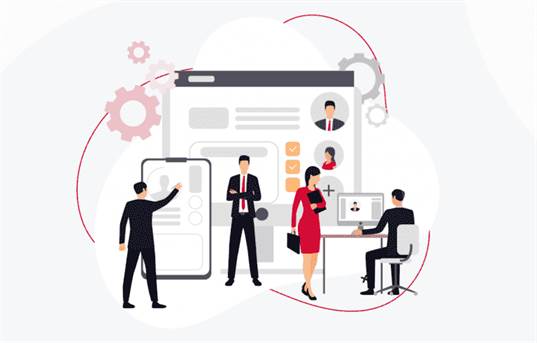Systems Thinking: What, Why, When, Where, and How?
The completed 11 SE functions of each phase serve as the inputs for the next phase. The entire process, including all the phases, is the Project Life Cycle.Each succeeding phase is additional progress what is system of systems toward a completed system. Keep in mind that even razor sharp tools are only as good as the artesian using them. The project life-cycle is broken down into life-cycle phasesand detailed in Figure 6.

In Figure 17 the risk, code, effect and mitigation strategy are presented in an example. Mitigation can be achieved by providing redundant components, fault tolerant components, and error detection methods. 2) planning for V&V physical testing by creating a verification plan during Phase B and executing the testing in accordance with that plan during Phase D. Concept of Operations (“ConOps”) is a description of how the system will operate during the mission to meet stakeholder expectations . It describes the system characteristics from an operational perspective and helps facilitate the understanding of the system goals. It is a time ordered list of a sequence of steps, or graphically represented like Figure 14 below.
What is the ‘system’ in systems thinking?
In 1976 the Viking-I performed the first successful landing on Mars by a NASA spacecraft, which was designed using Systems Engineering. From several alternative concepts, down select to a single conceptual system. (To choose among design alternatives here it may be necessary to perform trade studies). The steps of risk management are 1) Seek and identify the risks, 2) Determine their severity and effect of the risk, and 3) Develop methods to mitigate the risk. The steps can be performed in a table as a method called Failure Modes Analysis. First a table like Figure 16 is created that codes the severity of a risk from 1 (non-critical failure) to 4 .
The SoS does not have central management authority or a centrally agreed-upon purpose. Typically, the acquisition of a virtual SoS is unplanned and is made up of component systems that may not have been designed to be integrated. Once its use is over, the components are normally disassembled and no longer operate in an SoS. The SoS is created and managed to fulfill a specific purpose and the constituent systems operate independently. Also keep in mind that people often think that a diagram has to incorporate all possible variables from a story; this is not necessarily true. In some cases, there are external elements that don’t change, change very slowly, or whose changes are irrelevant to the problem at hand.
Processor(s)
The knowledge of the boundaries of a given system is crucial in determining the nature of its interface with other systems for successful design. The environment is the “supersystem” within which an organization operates. In some cases, input is also modified to enable the processor for handling the transformation. Integration is concerned with how a system components are connected together. It means that the parts of the system work together within the system even if each part performs a unique function.

For example, in Phase 3 a concept may fail to meet engineering specification after concept evaluation, so the steps of Phase 3 may begin again to create more concepts. At one time, this was not true and “traditional” EDP was thought of as a sequential process like Figure 3, with manufacturing the last step which started only when design was complete. The primary tasks are identified with objectives for each, teams are formed, costs and schedules to meet the objectives are estimated, deliverables and reviews are planned, all followed by the first design review.
When Should We Use Systems Thinking?
Complexity is important for software engineering because it is the main influence on the understandability and the changeability of a system. The more complex a system, the more difficult it is to understand and analyze. As complexity increases, there are more and more relationships between elements of the system and an increased likelihood that changing one part of a system will have undesirable effects elsewhere.

They interface and integrate with any systems by using two main components — protocol connectors to handle communication protocols such as HTTP, TCP, JMS, etc., and message formatter to handle various data formats such as JSON, XML, etc. The hub serves as a message-oriented middleware with a centralized integration engine to translate operations into a single canonical language and route messages to the right destinations. The spokes connecting the hub to the subsystems are managed individually. The hub-and-spoke model is a more advanced type of integration architecture that addresses the issues of point-to-point and helps to avoid the star/spaghetti mess. The connections between all subsystems are handled by a central hub , so they don’t communicate with each other directly.
Environment
Under your last assignment (2.2) in your Word file, write “Assignment 2.3” and add your responses to this assignment. When you have completed all assignments of this lesson, save the document as a file on your computer and make sure the file is named “systems”. After you have saved your file, go to the student interface and submit your assignment for grading.
- By anticipating the impact of each trade-off, we can minimize its severity or even use it to our own advantage.
- The subsystems and components are represented as nodes with memory that stores items.
- The trade space of a trade study is the set of all feasible alternatives that were created at the end of Step 2 for evaluation in Step 3.
- If one subsystem fails and other subsystems are highly dependent on it, the others will either fail themselves or have problems functioning.
- A separate interface must be developed for each approved system so that common services can be used with these systems.
Scheduling performance diagnostics to make sure that all modules function flawlessly and no errors occur is advised. Integration Platform as a Service is a set of cloud-based integration solutions mostly used for building and deploying integrations in the cloud. So, to perform analytics, you don’t need to manually download and export it to the centralized repository.
Key steps of system integration
The situation in SoS in the context of existing SoS frameworks is described and the current DoD approach to SoS is discussed and challenges the soS environment poses for the systems engineer at both the SoS and system levels are discussed. This paper provides further insights and recommendations for the evolution of system of systems processes using lean concepts and provides thirteen SoS case studies to illustrate the emphasis on lean thinking. The constituent systems may change in the course of the testing process so tests may not be repeatable. There may be no detailed requirements specification that can be used as a basis for system testing. It may not be cost effective to develop a SoS requirements document – the details of the system functionality are defined by the systems included. To develop service-based interfaces, you have to examine the functionality of existing systems and define a set of services to reflect that functionality.
Now, SoSE concepts and principles apply across other governmental, civil and commercial domains. SoS is a relatively new area, with the result that there has been limited attention given to ways to extend systems thinking to the issues particular to SoS. Work is needed to identify and articulate the cross cutting principles that apply to SoS in general, and to developing working examples of the application of these principles. There is a major learning curve for the average systems engineer moving to a SoS environment, and a problem with SoS knowledge transfer within or across organizations.
Hub-and-spoke model
To date, SoSOA has supported 25 projects across six Components and multiple HQ functional areas. Recently, the SoSOA Team engaged with DHS Ops Reporting and the National Operations Center to visualize COVID-19 data points in the USA and border countries. Decision makers can easily see and understand the impacts of social distancing and population density on susceptible and exposed populations, case counts, hospitalizations, and deaths. From the perspective https://www.globalcloudteam.com/ of systems thinking, this video warns us that if you do not understand the interrelationships of the parts of a whole system, then the solutions can cause more problems than you expected. For a system to continue to operate and produce, the interrelationships and interdependencies must be dynamic. Dynamic relationships are like links in a chain, where an adverse condition in one link impacts the next, and so on to the end or final output.


